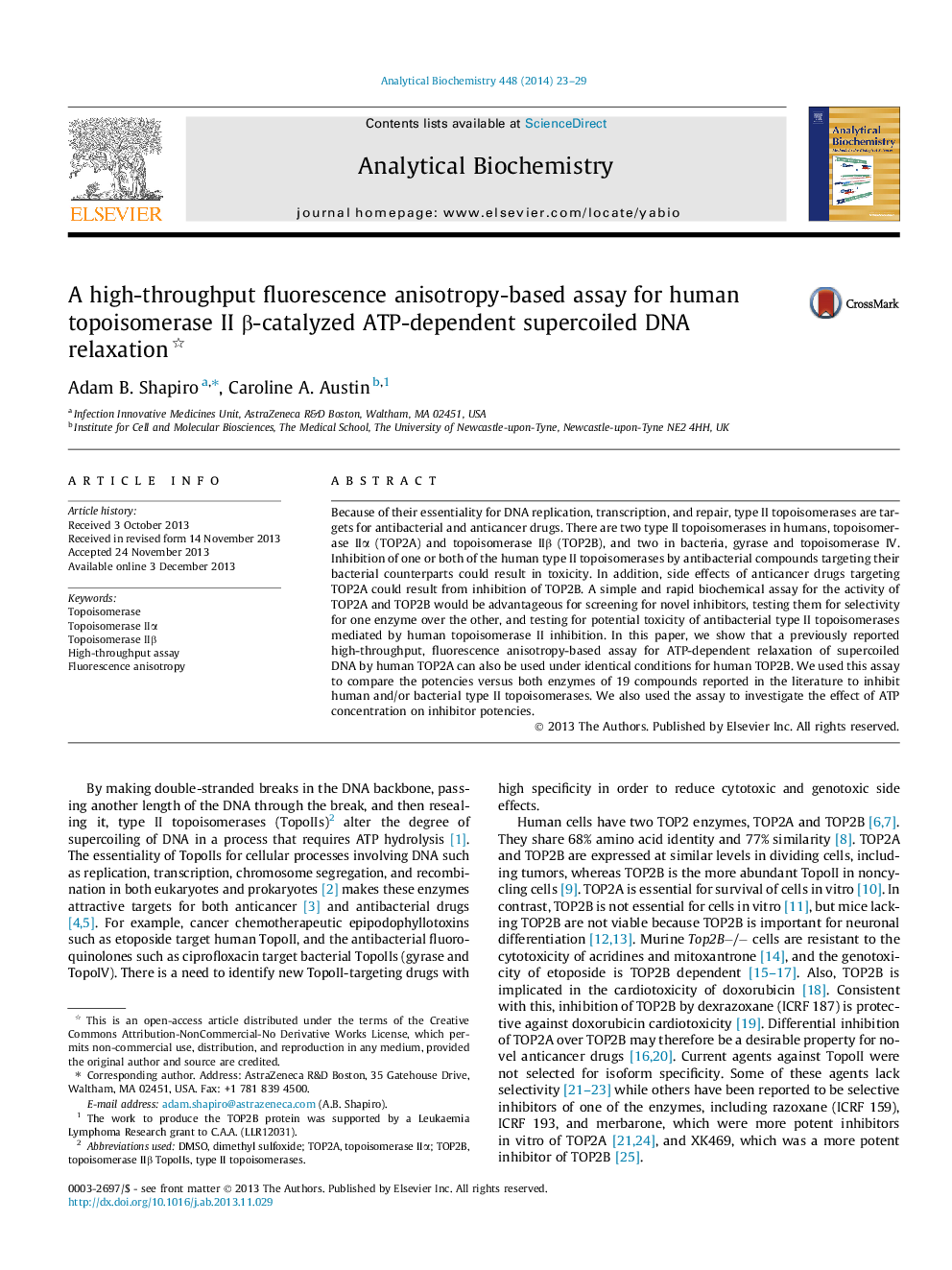| کد مقاله | کد نشریه | سال انتشار | مقاله انگلیسی | نسخه تمام متن |
|---|---|---|---|---|
| 7559407 | 1491399 | 2014 | 7 صفحه PDF | دانلود رایگان |
عنوان انگلیسی مقاله ISI
A high-throughput fluorescence anisotropy-based assay for human topoisomerase II β-catalyzed ATP-dependent supercoiled DNA relaxation
دانلود مقاله + سفارش ترجمه
دانلود مقاله ISI انگلیسی
رایگان برای ایرانیان
کلمات کلیدی
موضوعات مرتبط
مهندسی و علوم پایه
شیمی
شیمی آنالیزی یا شیمی تجزیه
پیش نمایش صفحه اول مقاله

چکیده انگلیسی
Because of their essentiality for DNA replication, transcription, and repair, type II topoisomerases are targets for antibacterial and anticancer drugs. There are two type II topoisomerases in humans, topoisomerase IIα (TOP2A) and topoisomerase IIβ (TOP2B), and two in bacteria, gyrase and topoisomerase IV. Inhibition of one or both of the human type II topoisomerases by antibacterial compounds targeting their bacterial counterparts could result in toxicity. In addition, side effects of anticancer drugs targeting TOP2A could result from inhibition of TOP2B. A simple and rapid biochemical assay for the activity of TOP2A and TOP2B would be advantageous for screening for novel inhibitors, testing them for selectivity for one enzyme over the other, and testing for potential toxicity of antibacterial type II topoisomerases mediated by human topoisomerase II inhibition. In this paper, we show that a previously reported high-throughput, fluorescence anisotropy-based assay for ATP-dependent relaxation of supercoiled DNA by human TOP2A can also be used under identical conditions for human TOP2B. We used this assay to compare the potencies versus both enzymes of 19 compounds reported in the literature to inhibit human and/or bacterial type II topoisomerases. We also used the assay to investigate the effect of ATP concentration on inhibitor potencies.
ناشر
Database: Elsevier - ScienceDirect (ساینس دایرکت)
Journal: Analytical Biochemistry - Volume 448, 1 March 2014, Pages 23-29
Journal: Analytical Biochemistry - Volume 448, 1 March 2014, Pages 23-29
نویسندگان
Adam B. Shapiro, Caroline A. Austin,